Menu
x
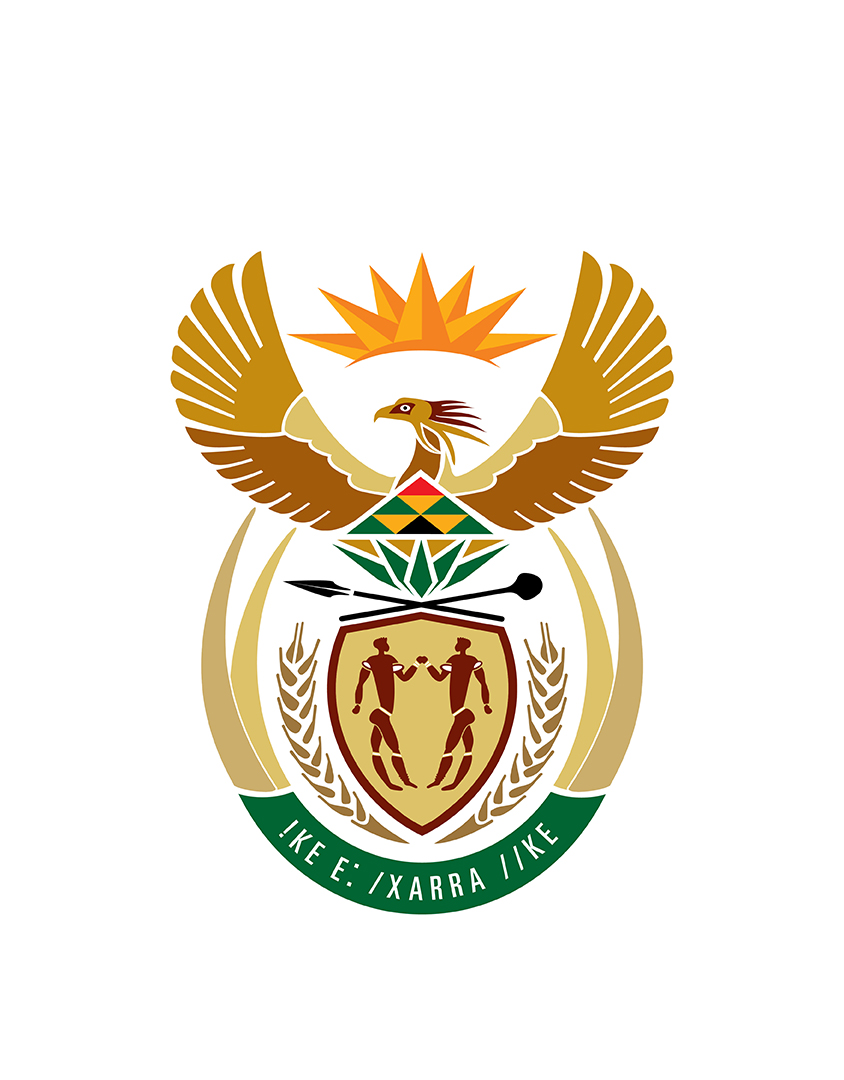
National Coat of Arms
The role of a Coat of Arms
A national Coat of Arms, or state emblem, is the highest visual symbol of the State.
The Coat of Arms is also a central part of the Great Seal, traditionally considered to be the highest emblem of the State. Absolute authority is given to every document with an impression of the Great Seal on it, as this means that it has been approved by the President of South Africa.
Iaan Bekkers design was chosen for the new South African Coat of Arms, which was launched on Freedom Day, 27 April 2000. The change reflected the government's aim to highlight the democratic change in South Africa and a new sense of patriotism.
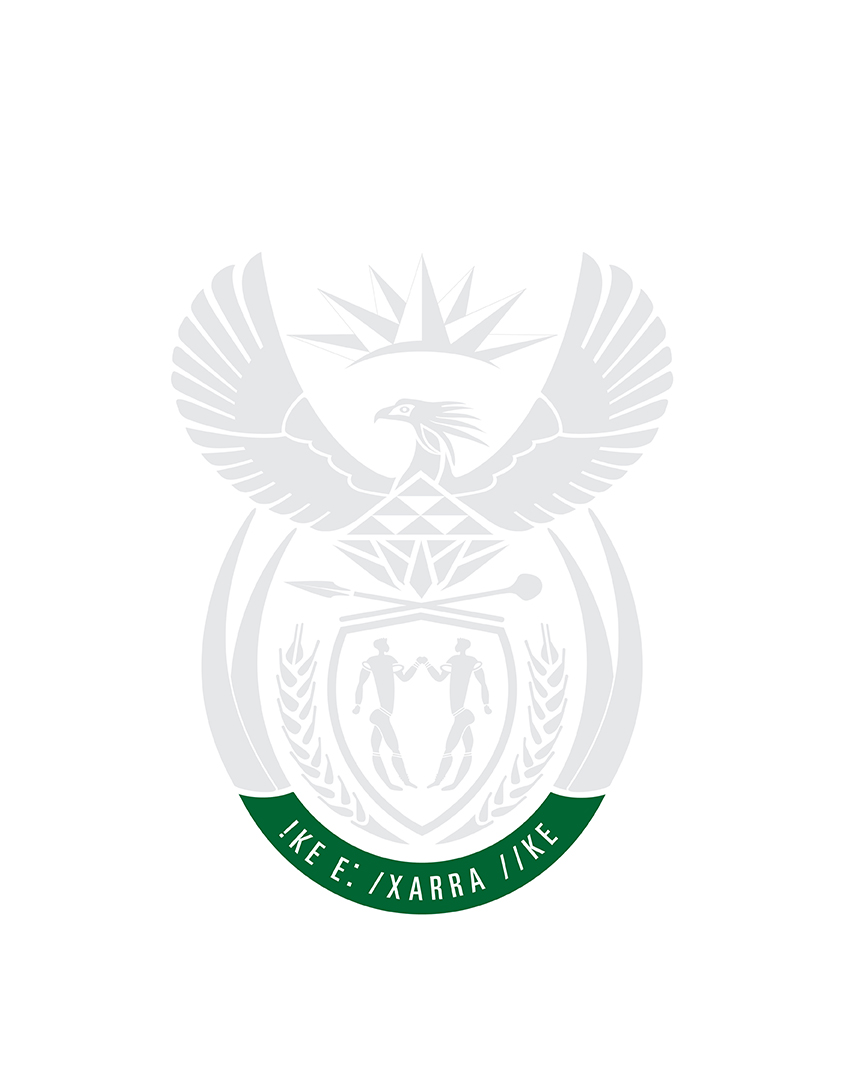
National Coat of Arms
The motto
The motto is: !ke e: /xarra //ke, written in the Khoisan language of the /Xam people, literally meaning diverse people unite. It addresses each individual effort to harness the unity between thought and action.
On a collective scale, it calls for the nation to unite in a common sense of belonging and national pride - unity in diversity.
Pronunciation of !ke e: /xarra //ke:
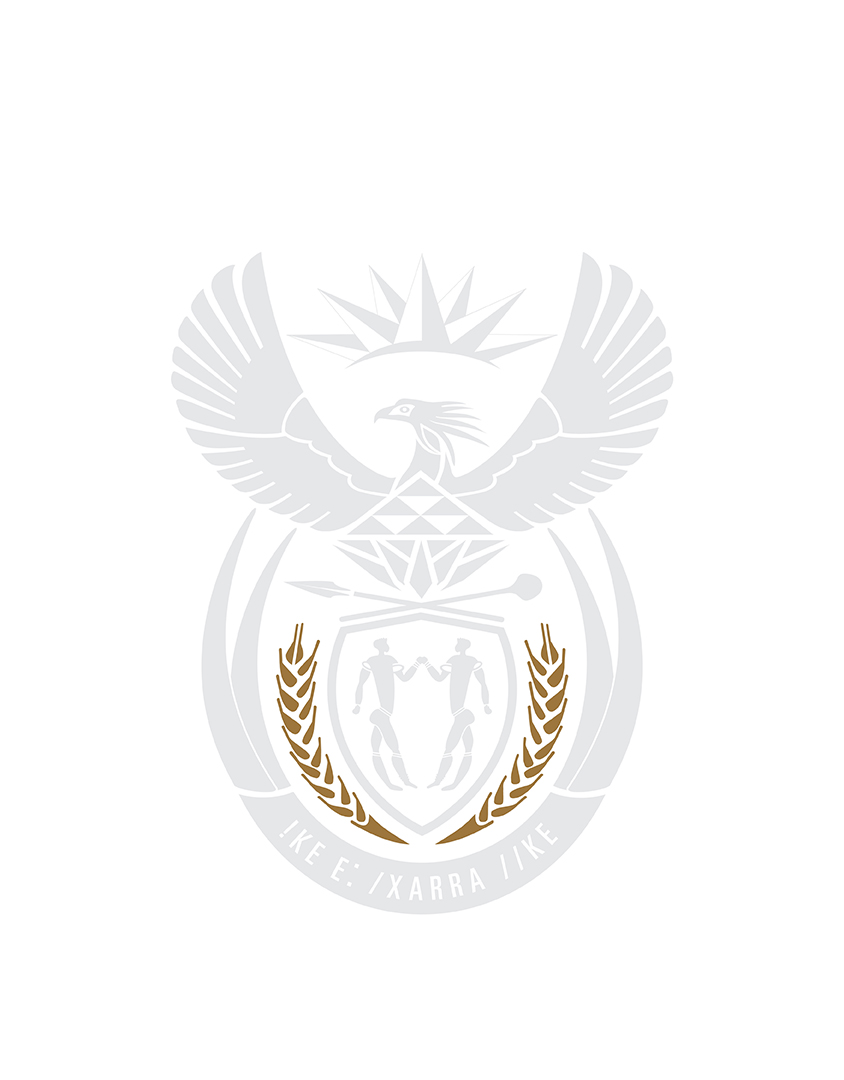
National Coat of Arms
The ears of wheat
An emblem of fertility, it also symbolises the idea of germination, growth and the feasible development of any potential. It relates to the nourishment of the people and signifies the agricultural aspects of the Earth.
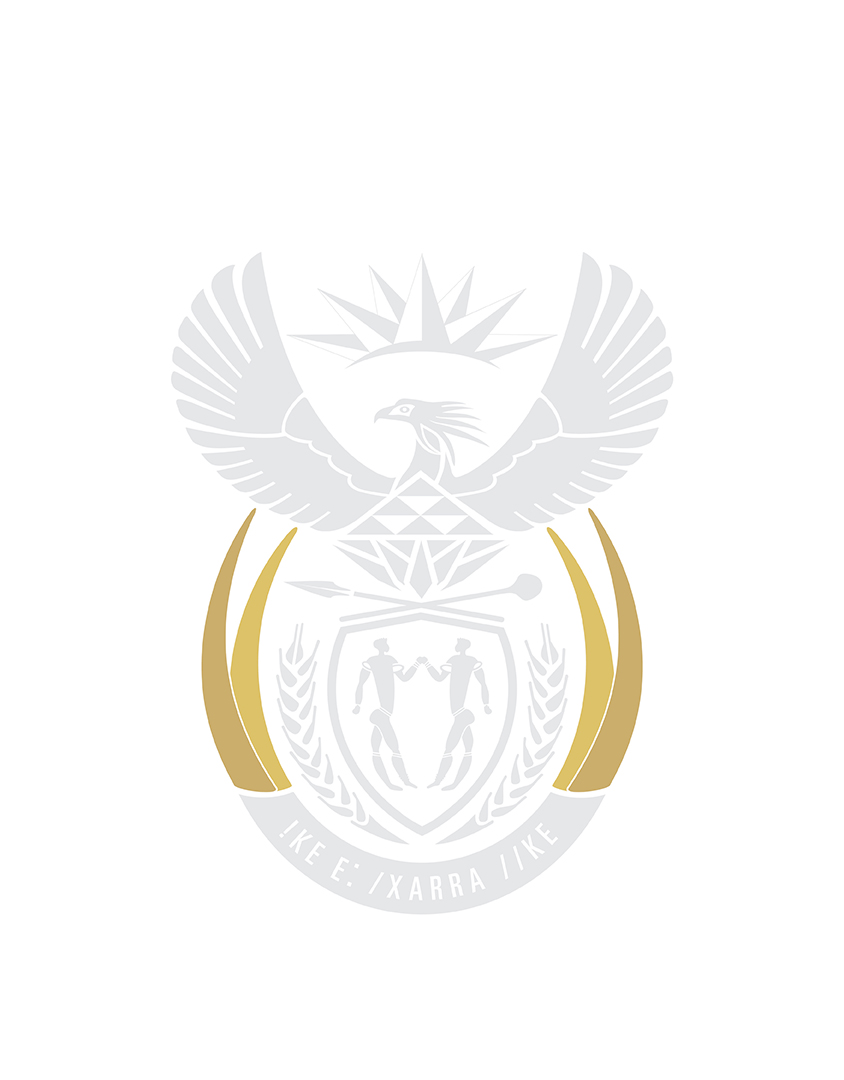
National Coat of Arms
Elephant tusks
Elephants symbolise wisdom, strength, moderation and eternity.
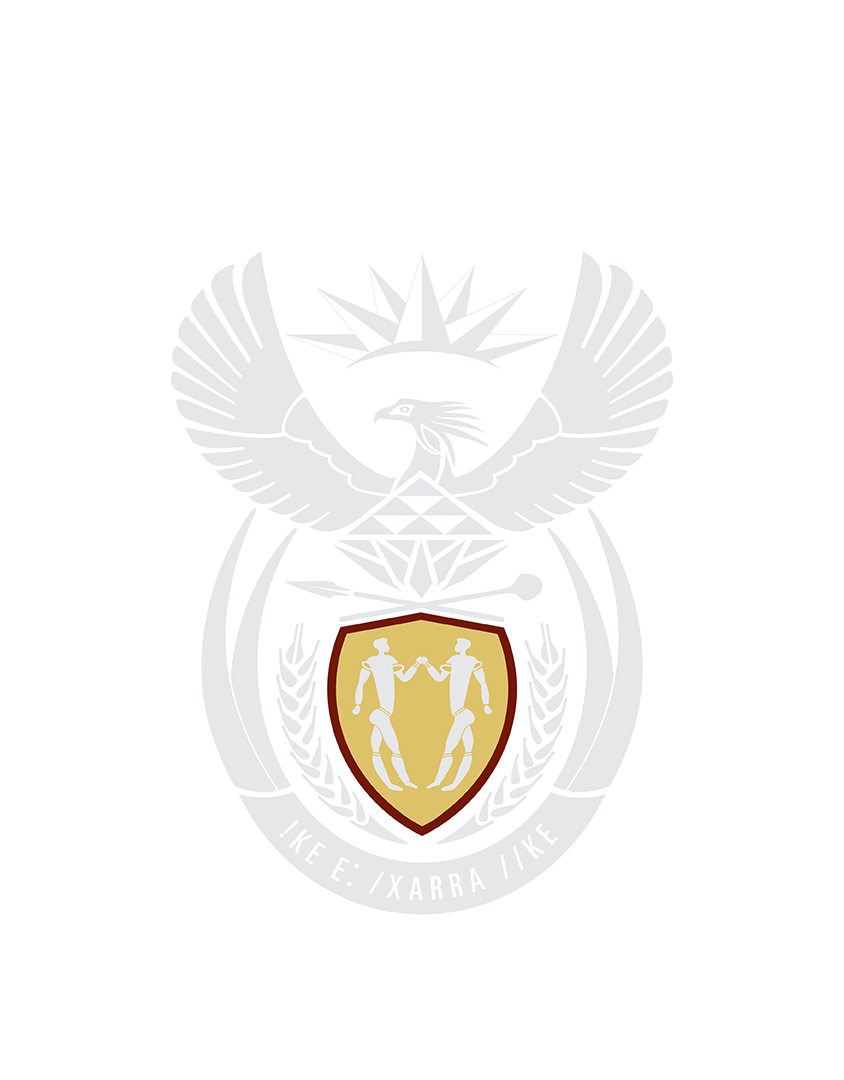
National Coat of Arms
The shield
It has a dual function as a vehicle for the display of identity and of spiritual defence. It contains the primary symbol of our nation.

National Coat of Arms
The human figures
The figures are derived from images on the Linton stone, a world-famous example of South African rock art, now housed and displayed in the South African Museum in Cape Town. The Khoisan, the oldest known inhabitants of our land and most probably of the Earth, testify to our common humanity and heritage as South Africans and as humanity in general. The figures are depicted in an attitude of greeting, symbolising unity. This also represents the beginning of the individuals transformation into the greater sense of belonging to the nation and by extension, collective humanity.
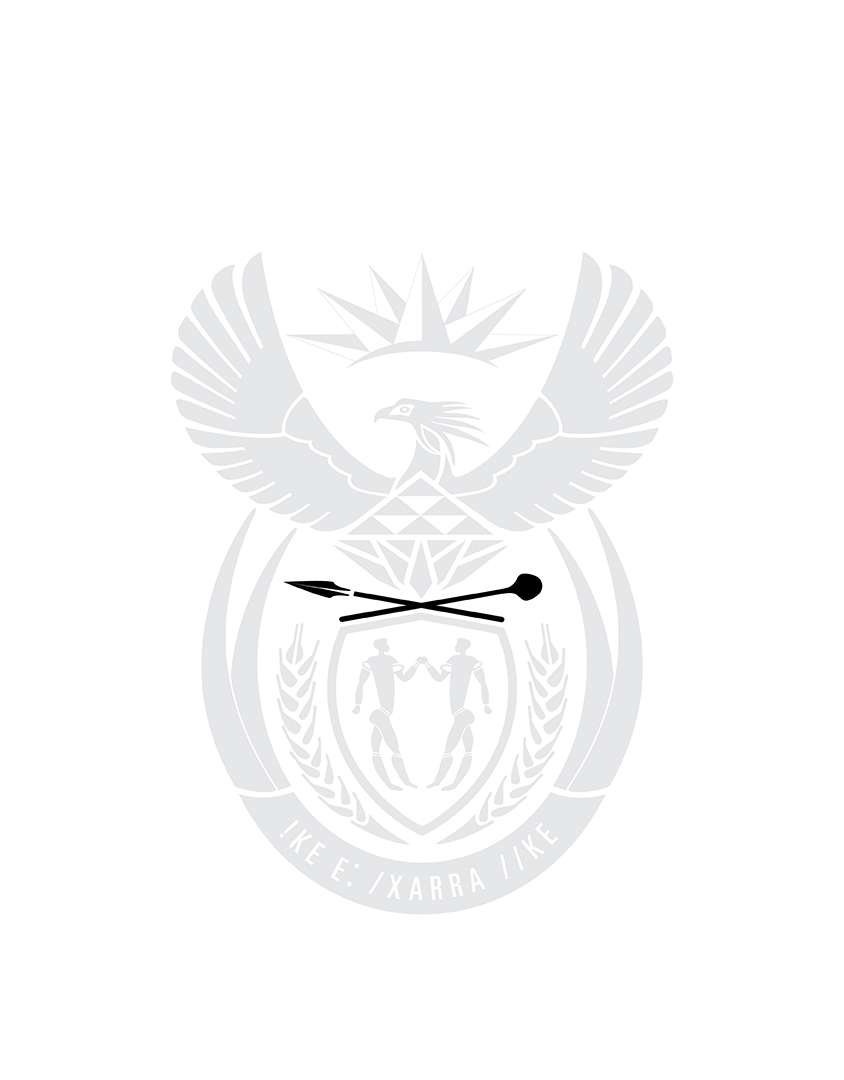
National Coat of Arms
The spear and knobkierie
Dual symbols of defence and authority, they in turn represent the powerful legs of the secretary bird. The spear and knobkierie are lying down, symbolising peace.
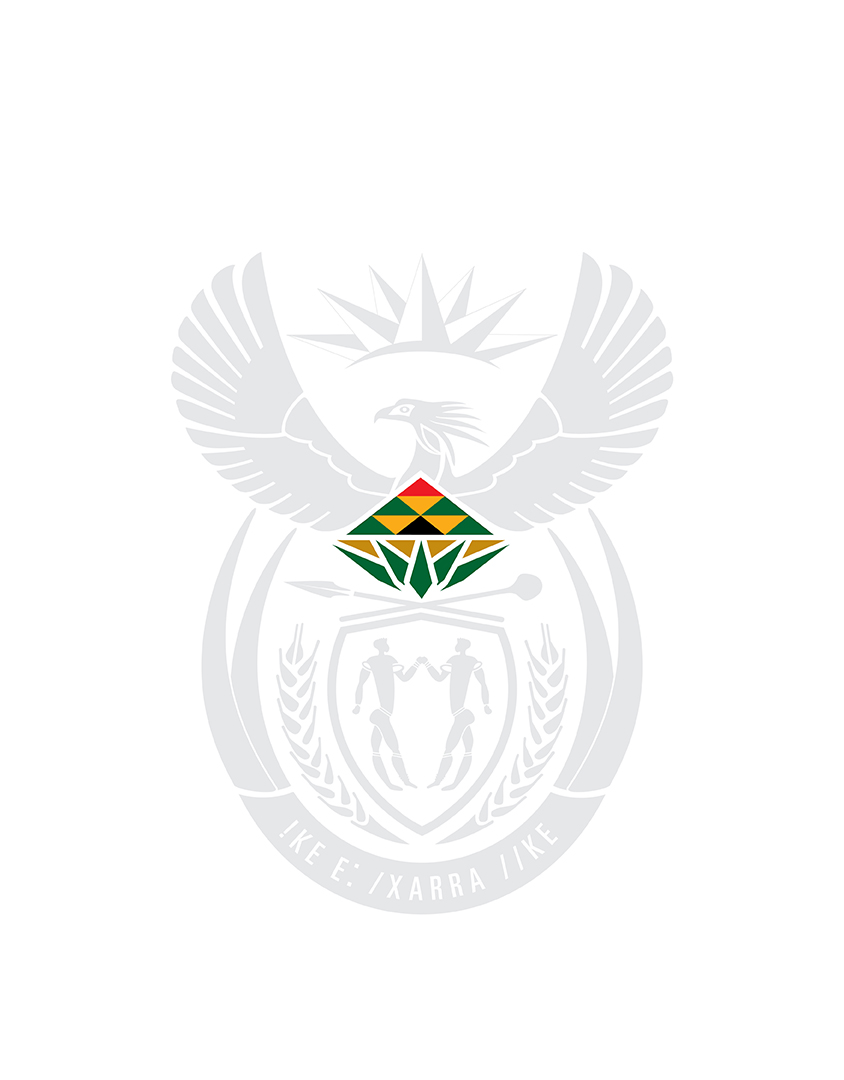
National Coat of Arms
The protea
The protea is an emblem of the beauty of our land and the flowering of our potential as a nation in pursuit of the African Renaissance. The protea symbolises the holistic integration of forces that grow from the Earth and are nurtured from above. The most popular colours of Africa have been assigned to the protea green, gold, red and black.
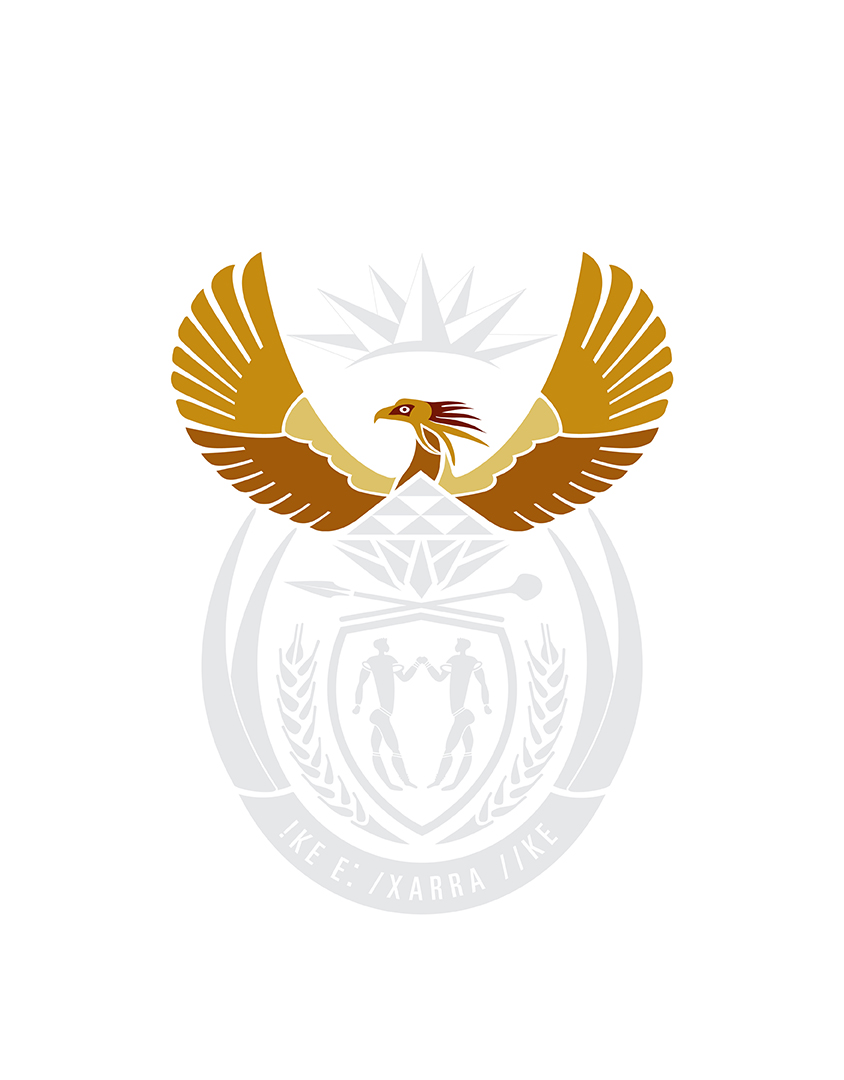
National Coat of Arms
The secretary bird
The secretary bird is characterised in flight, the natural consequence of growth and speed. It is the equivalent of the lion on Earth. A powerful bird whose legs - depicted as the spear and knobkierie - serve it well in its hunt for snakes, symbolising protection of the nation against its enemies. It is a messenger of the heavens and conducts its grace upon the Earth. In this sense it is a symbol of divine majesty. Its uplifted wings are an emblem of the ascendance of our nation, while simultaneously offering us its protection. It is depicted in gold, which clearly symbolises its association with the sun and the highest power.
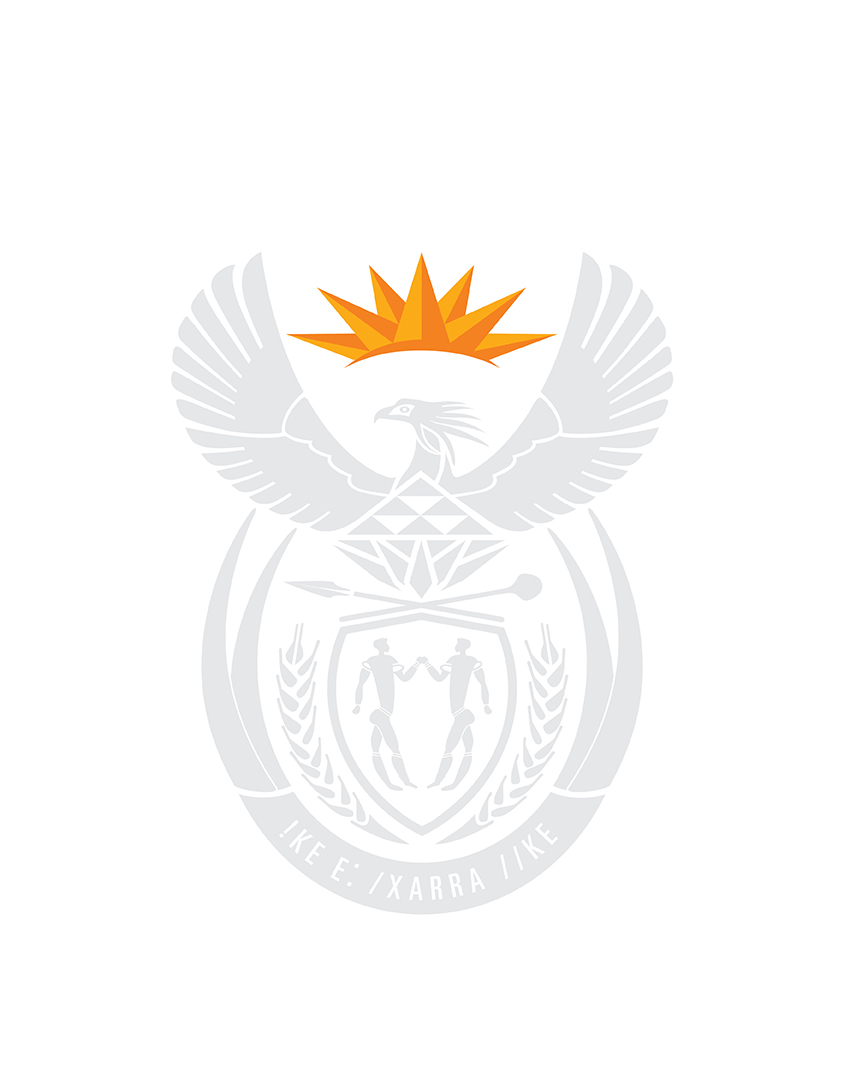
National Coat of Arms
The rising sun
An emblem of brightness, splendour and the supreme principle of the nature of energy, it symbolises the promise of rebirth, the active faculties of reflection, knowledge, good judgement and willpower. It is the symbol of the source of life, of light and the ultimate wholeness of humanity.

National Coat of Arms
Elephant tasks
Elephants symbolise wisdom, strength, moderation and eternity.
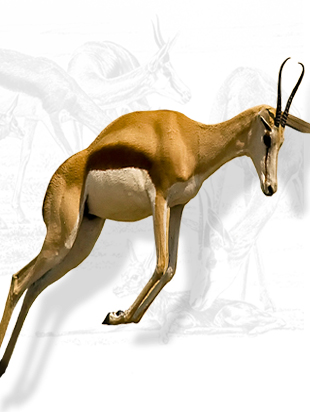
National Symbol
National Animal
The springbok was a national symbol of South Africa under white minority rule (including a significant period prior to the establishment of Apartheid). It was adopted as a nickname or mascot by a number of South African sports teams, most famously by the national rugby team. It appeared on the emblems of the South African Air Force, the logo of South African Airways (for which it remains their radio callsign) and the Coat of Arms of South Africa. It also featured as the logo of ‘South Africa’s Own Car’, the Ranger, in the early 1970s. The Springbok remains the national animal of South Africa. After the demise of apartheid, the ANC government decreed that South African sporting teams were to be known as the Proteas, however, the rugby team still maintain the name Springboks after the intervention of then-president Nelson Mandela, who did so as a gesture of goodwill to the mainly white (and largely Afrikaner) rugby supporters.

National Symbol
National Anthem
Lyrics
Nkosi sikelel' iAfrika
Maluphakanyisw' uphondo lwayo, (Xhosa and Zulu)
Yizwa imithandazo yethu,
Nkosi sikelela, thina lusapho lwayo.
Morena boloka setjhaba sa heso,
O fedise dintwa le matshwenyeho, (Sesotho)
O se boloke, O se boloke setjhaba sa heso,
Setjhaba sa South Afrika - South Afrika.
Uit die blou van onse hemel,
Uit die diepte van ons see, (Afrikaans)
Oor ons ewige gebergtes,
Waar die kranse antwoord gee,
Sounds the call to come together,
And united we shall stand, (English)
Let us live and strive for freedom,
In South Africa our land.
English translation of Xhosa and Zulu version:
Lord bless Africa
May her glory be lifted high
Hear our petitions Lord bless us, your children
English translation of Sesotho version:
Lord we ask You to protect our nation
Intervene and end all conflicts
Protect us, protect our nation
Protect South Africa, South Africa
English translation of Afrikaans version:
Out of the blue of our heavens
Out of the depths of our seas
Over our everlasting mountains
Where the echoing crags resound
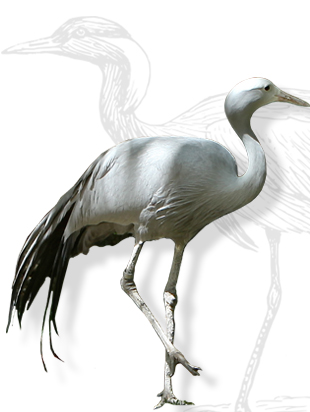
National Symbol
National Bird
The South African government has stepped up legal protection for the Blue Crane. Other conservation measures are focusing on research, habitat management, education, and recruiting the help of private landowners. The Blue Crane is a bird very special to the amaXhosa, who call it indwe. When a man distinguished himself by deeds of valour, or any form of meritorious conduct, he was often decorated by a chief by being presented with the feathers of this bird. After a battle, the chief would organise a ceremony called ukundzabela – a ceremony for the heroes, at which feathers would be presented. Men so honoured – they wore the feathers sticking out of their hair – were known as men of ugaba (trouble) - the implication being that if trouble arose, these men would reinstate peace and order.
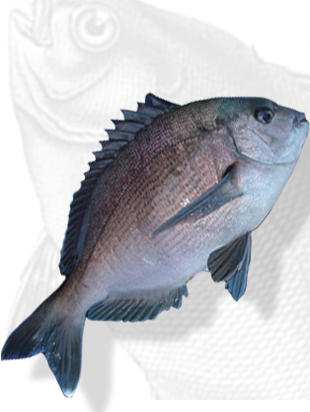
National Symbol
National Fish
The galjoen, coracinus capensis, is a species of marine fish that is found only along the coast of South Africa. It keeps to mostly shallow water, and is often found in rough surf, sometimes right next to the shore and is known to every angler. Near rocks, the colour of the galjoen is almost completely black, while in sandy areas the colour is silver-bronze. It is also known in KwaZulu-Natal as blackfish or black bream. The record size is over 55cm and 7kg, however the average is much smaller. The galjoen is a game fighter. The diet of the galjoen consists mainly of red bait (ascidians), small mussels and barnacles. Its scales are very firmly attached and its fins are well- developed with prominent spines.
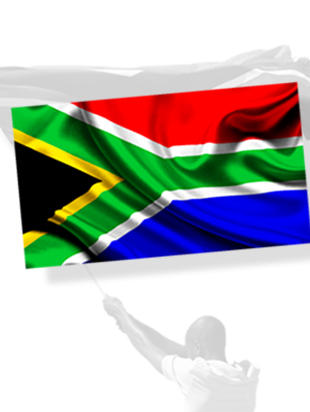
National Symbol
National Flag
Specific instructions with regard to the use of the national flag can be found in the Government Gazette 22356, Notice 510 of 8 June 2001 [PDF]. When the flag is displayed vertically against a wall, the red band should be to the left of the viewer with the hoist or the cord seam at the top. When it is displayed horizontally, the hoist should be to the left of the viewer and the red band at the top. When the flag is displayed next to or behind the speaker at a meeting, it must be placed to the speaker's right. When it is placed elsewhere in the meeting place, it should be to the right of the audience.
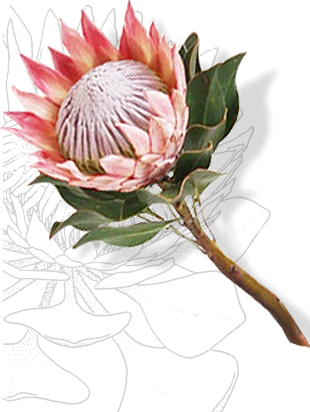
National Symbol
National Flower
The King Protea, (Protea cynaroides), is a flowering plant. Its flower head (what the layman will call the ‘flower’) is the largest in the genus Protea: the species is also known as Giant Protea, Honeypot or King Sugar Bush. It is widely distributed in the south-western and southern parts of South Africa of the fynbos region. The artichoke-like appearance of the flower-heads of the King Protea lead to the specific name ‘cynaroides’, which means ‘like cynara’ (the artichoke). The name does not do justice to the beautiful flower-heads of this protea, which is the largest in the genus. A number of varieties in colour and leaf shapes are found, but the most beautiful is the pink coloured flower.
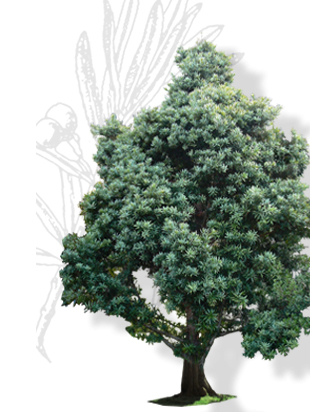
National Symbol
National Tree
The yellowwood family is primeval and has been present in South Africa for more than 100 million years. The species is widespread and is found from Table Mountain, along the southern and eastern Cape coast, in the ravines of the Drakensberg up to the Soutpansberg and the Blouberg in Limpopo. In forests, they can grow up to 40m in height with the base of the trunk sometimes up to 3m in diameter. In contrast, trees that grow in unsheltered places like mountain-slopes, are often short, bushy and gnarled. The bark of the real yellowwood is khaki-coloured to grey when it is old, deeply split and peels off in strips. The crown is relatively small in relation to its height and is often covered with grey lichen. Male and female cones resemble pine cones and are white, light green or pink. The female cone has a fleshy podocarpium on which the seed, which takes on the shape and colour of a cherry, develops. The leaves are strap-shaped, 25–40mm long on mature trees, larger, to 100mm long, on vigorous young trees, and 6–12mm broad, with a bluntly pointed tip. It is a slow-growing tree. The wood is hard, similar to yew wood, used for furniture, panelling, etc. Due to past over-exploitation, little is now cut.





